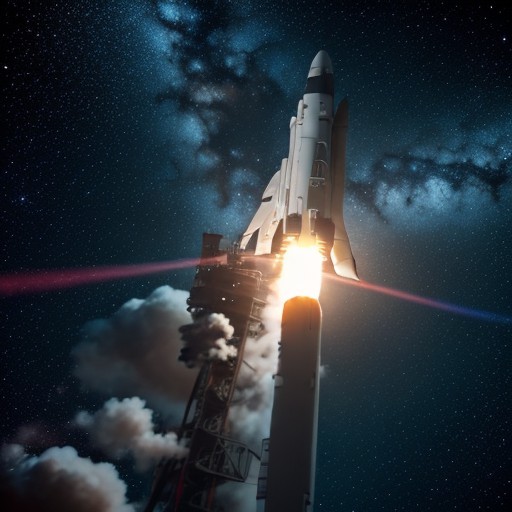Moon Mission Precision: Japan's Lunar Landing Attempt and the Challenges of Solar-Powered Exploration
(SKY-LAND) — A Japanese rocket conveying the public space organization's moon lander is sent off at Tanegashima Space Center on the southwestern island of Tanegashima,
TOKYO — Japan on Saturday turned into the fifth country to put a rocket on the moon, yet sun oriented power issues took steps to slice short the country's central goal to demonstrate a "accuracy" arrival innovation and rejuvenate a space program that has endured difficulties.
The Japan Aviation Investigation Office said its Brilliant Lander for Examining Moon arrived on the moon's surface at around 8:20 a.m. MST, however its sunlight based chargers couldn't create power, perhaps in light of the fact that they are calculated off-base.
Japan's space organization focused on the exchange of the moon lander's information to Earth as the test depended exclusively on its battery, which would keep going for "a couple of hours" notwithstanding "life-supporting medicines, for example, switching off its warmer, Hitoshi Kuninaka, the top of Japan's space office research focus, told a public interview.
Japan's space organization will keep up with the norm as opposed to make dangerous moves and expectations a change in the daylight's point will raise a ruckus around town in a manner that can reestablish its capabilities, he added.
"It requires 30 days for the sun powered point to change on the moon," Kuninaka said. "So when the sunlight based course changes, and the light sparkles from an alternate heading, the light could wind up raising a ruckus around town cell."
The sign from the moon lander was lost, information from NASA's Profound Space Organization showed. It was not quickly certain if the sign misfortune was transitory or an influence saving measure.
Named the "moon expert marksman," the moon lander endeavored to land inside 328 feet of its objective, versus the customary precision of a few miles, an innovation Japan's space organization says will turn into a useful asset in future investigation of uneven moon shafts seen as a possible wellspring of oxygen, fuel and water.
"Taking a gander at the follow information, Thin unquestionably accomplished an arrival with 100-meter exactness," Kuninaka said, despite the fact that adding it will require about a month to confirm it.
A smaller than usual model of the Shrewd Lander for Researching Moon is shown at Japan Aviation Investigation Organization's office in Sagamihara, south of Tokyo,
Japan is progressively hoping to assume a greater part in space, collaborating with its US partner to counter China. Japan is likewise home to a few private-area space new companies and Japan's space organization means to send a space traveler to the moon as a component of NASA's Artemis program in the following couple of years.
However, the Japanese space organization has as of late confronted different mishaps in rocket advancement, remembering the send off disappointment for Spring of its new lead rocket H3 that was intended to match cost-seriousness against business rocket suppliers like SpaceX.
The disappointment created far reaching setbacks for Japan's space missions, including the moon lander and a joint lunar investigation with India, which in August made a notable score on the moon's south pole with its Chandrayaan-3 test.
Japan's space office has two times arrived on little space rocks, however dissimilar to with a space rock handling, the moon's gravity implies the lander can't pull up for another attempt, its researchers said. Three lunar missions by Japanese startup ispace, Russia's space office and American organization Astrobotic have bombed in the previous year.
In Sagamihara, a Tokyo suburb where the control community for Japan's space organization is situated, around 80 individuals assembled at a city lobby for the public review of the 12 PM landing.
"There has been a progression of send off disappointments (of Japan's space organization rockets) so I truly maintained that this should succeed," said Toshie Yamamoto, an office specialist in her 50s.
There was a strained air during the plunge succession, however they broke into praise while the arrival on the moon was declared.
Delicate landing
Just four countries — the previous Soviet Association, the US, China and India — and no privately owned business had accomplished a delicate arriving on the moon's surface.
The 7-foot by 6-foot by 9-foot vehicle incorporates two principal motors and 12 engines, encompassed by sun powered cells, recieving wires, radar and cameras. Keeping it lightweight was one more evenhanded of the undertaking, as Japan plans to complete more continuous missions in the future by diminishing send off costs. The moon lander weighed 1,540 pounds at send off, not exactly 50% of India's Chandrayaan-3.
As the test plummeted onto the surface, it was intended to perceive where it was flying by coordinating its camera's pictures with existing satellite photographs of the moon. This "vision-based route" empowers an exact score, Japan's space office has said.
The accuracy arrival "won't be a unique advantage," yet the expense decrease impacts of it and the lightweight test assembling could open up moonshots to space associations around the world, Bleddyn Bowen, a College of Leicester academic partner gaining practical experience in space strategy, expressed in front of the score.
Safeguards connect with the lunar surface in what Japan's space office calls a new "two-step landing" technique — the back parts contact the ground first, then, at that point, the whole body delicately implodes forward and balances out.
On handling, the moon lander effectively conveyed two smaller than usual tests — a bouncing vehicle as large as a microwave and a baseball-sized wheeled meanderer — that would have taken photos of the shuttle and were gradually sending them to the earth, Japan's space organization said. Tech monster Sony Gathering, toymaker Tomy and a few Japanese colleges mutually fostered the robots.
The moon lander was sent off on Japan's lead H-IIA rocket in September and has taken an eco-friendly four-month excursion to the moon.


Wow, wonderful 👍
ReplyDelete